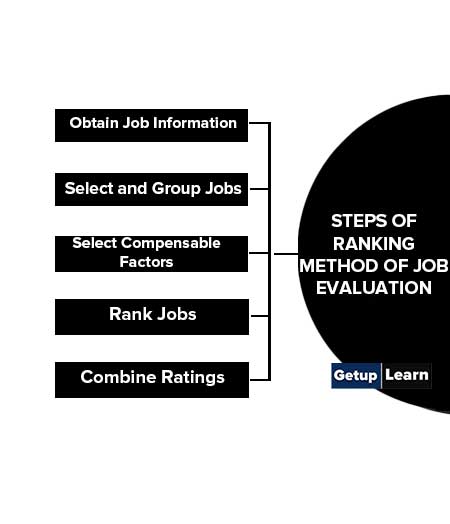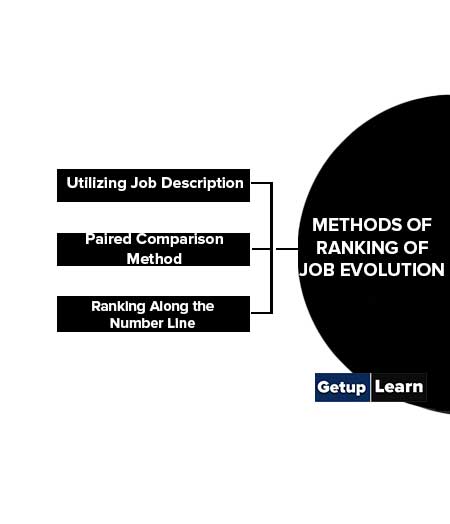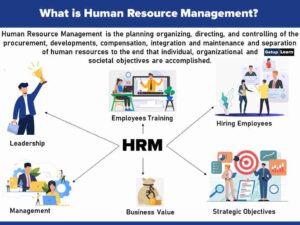
Table of Contents
Ranking Method of Job Evaluation
In the ranking of job evaluation, a whole job is compared with others, and rank is provided on the basis of this comparison. The usual process followed in this method is as under. On the basis of job analysis, an easy member of the job evaluation committee ranks each job independently either against the benchmark job or against all other jobs.
The ranking is provided to the job on the basis of the comparison. In order to increase the reliability of ranking, this exercise is undertaken twice or thrice by the member. If there are significant differences of opinions among the member about the ranking of a particular job, the matter is settled by mutual consultation, or by working out the average.
Under the ranking system all the jobs are arranged or ranked in the order of their importance from the simplest to the hardest, or in the reverse order, each successive job being higher or lower than the previous one in the sequence. It is not necessary to have job descriptions.
In this method, a series of grades or zones are established and all the jobs in the organization are arranged accordingly. A more common practice is to arrange all the jobs according to their requirements by rating them and then establishing the group or classification.
Steps of Ranking Method of Job Evaluation
There are serval steps of ranking method of job evaluation:

Obtain Job Information
Job analysis is the first step. Job descriptions for each job are prepared, and the information they contain about the job’s duties is usually the basis for ranking jobs (Sometimes job specifications are also prepared). However, the ranking method usually ranks jobs according to the whole job, rather. then a number of compensable factors.
Therefore, job specifications listed the job’s demand in terms of problem-solving, decision making, and skills, for instance, are not necessary with this method as they are not other job evolution methods.
Select and Group Jobs
It is often not practical to make a single ranking for all jobs in an organization. The usual procedure is to rank jobs by department or in clusters (such as factory workers or clerical workers). This eliminates the need for a direct comparison of factory jobs and clerical jobs.
Select Compensable Factors
In the ranking method, it is common to use just one factor (such as job difficulty) and to rank jobs based on the whole job. Regardless of the number of factors you choose, it’s advisable to explain the definition of the factors to the evaluators carefully so that they evaluate the jobs consistently.
Rank Jobs
For example, give each rater a set of index cards, each of which contains a brief description of the job. Then They rank these cards from lowest to highest, some managers use “alternation ranking methods” for making the procedure more accurate. Here you can take the cards, first choosing the highest and the lowest cards.
The job in this small health facility is right. After ranking, it is possible to slot additional jobs between those already ranked and assign an appropriate wage rate.
Combine Ratings
Usually, several raters rank the jobs independently. Then the rating committee (or the employer) can simply average the rankings. This is the simplest job evaluation method, as well as the easiest to explain. And it usually takes less time than other methods.
Some of its drawbacks derive more from how it’s used than from the method itself. For example, there’s a tendency to rely too heavily on “guesstimates.” Similarly, ranking provides no yardstick for quantifying the value of one job relative to another.
For example, job number 4 may be five times “more valuable” than job number 5, but usually more appropriate for small organizations that can’t afford the time or expense of developing a more elaborate system.
Methods of Ranking of Job Evolution
Following are the methods of ranking of job evolution:

Utilizing Job Description
In this, each rater is given a set of job descriptions, one for each job to be ranked. The job descriptions are then studied and analyzed. The difference between them is noted with respect to the key points selected. The jobs are then ranked depending on the number of characteristics they require. After each rater has assigned his rankings independently, their rankings can be compared and the majority of rankings are selected.
Paired Comparison Method
In this, each job is paired with every other job in the series. Next, the rater examines each pair and determines which of the two is more difficult in terms of characteristics selected as guides. He then underlines the more difficult job. The number of times a particular job is rated more difficult than the other is counted.
Ranking Along the Number Line
It is an extension of the job description and paired comparison method. Here marks obtained from job descriptions or paired comparison is spaced along the number line. Each job is then placed along the line on the basis of its closeness to the highest ranked job.
What are the methods of ranking?
Following are the methods of ranking job evolution:
1. Utilizing Job Description
2. Paired Comparison Method
3. Ranking Along the Number Line.
What is the first step in the ranking method of job evaluation?
Following are serval steps of the ranking method of job evaluation:
1. Obtain Job Information
2. Select and Group Jobs
3. Select Compensable Factors
4. Rank Jobs
5. Combine Ratings.
















